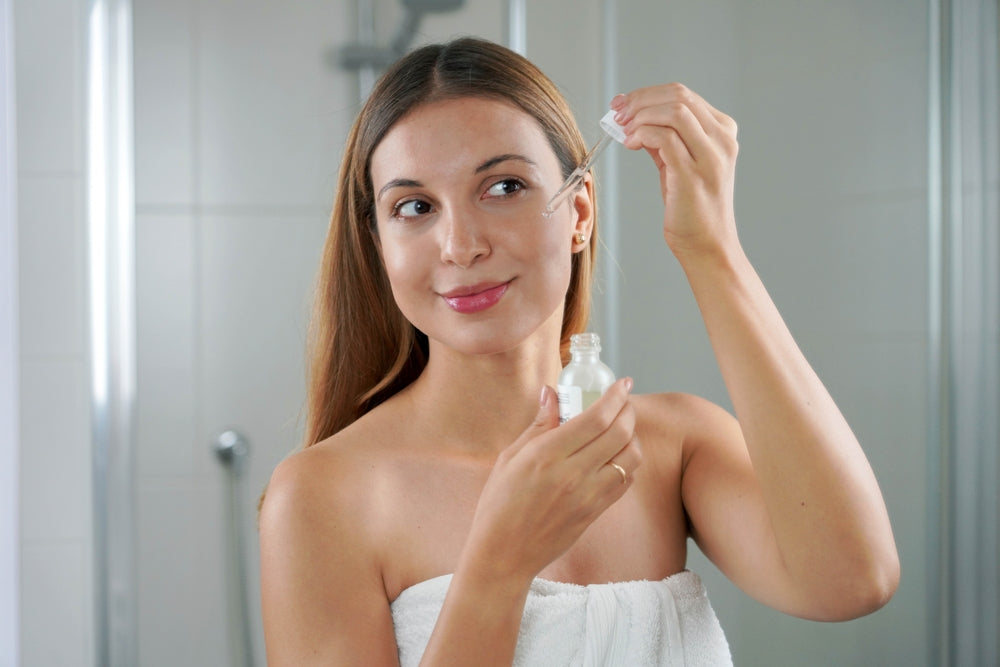Retinoids have been used for decades and have reemerged in popularity for their cutting-edge anti-aging properties. Vitamin A compounds have are known to visibly reduce the signs of UV damage, photoaging, acne, and hyperpigmentation.
While the skin adapts to retinoids, you can experience “retinization,” which causes skin flakiness, sensitivity, and redness. Moving past this phase can take your skin a few weeks to months. Knowing how to use retinol on dry skin is beneficial to help achieve the best outcome for your skin.
How to Use Retinol for Dry Skin
Choose a Mild Product
Choosing a mild retinol product is essential to minimize skin irritation. You should begin with gentle products to let the skin ease into the effects gradually.
Start Slow
Gradually introducing your skin with a light-strength retinol every other night or two for the first few weeks can reduce side effects. Working with your skin can help your skin acclimate to the product better.
Increase Frequency
After your skin has adjusted, you can increase the frequency to a nightly routine by using a pea-sized amount and spreading it evenly on your entire face.
Tips to get the best results:
Don’t Apply Retinol to Wet Skin
Retinol is more likely to bother the skin when it is wet. Increased moisture can cause the product to penetrate the skin.
Use Moisturizers
Using a daily moisturizer can help decrease skin flakiness by rehydrating the skin. Using this in your skincare routine with retinol can minimize the initial side effects of retinization.
Only Use Retinol at Night
Retinol increases the skin's sensitivity to the sun, increasing the risk of sun damage and irritation.
Use SPF During the Day
Since retinol increases sun sensitivity, using SPF for additional protection during the day is essential.
Use Retinol That is Already in a Moisturizer
Using retinol that is already in a moisturizer allows the retinol to be gentler on sensitive skin.
Our Recommended Retinol Products:
Retinol Anti-Wrinkle Complex
Retinol Anti-Wrinkle Complex combines moisturizing ingredients with retinol in a shea butter base. This product uses a blend of Vitamin A and Glycolic Acid and is considered a skin serum. During your skincare routine, you should use this at night.
Prevention and Correction Duo
The Prevention and Correction Duo includes the CXC Vitamin C Complex and Retinol Anti-Wrinkle Complex. Using CXC Vitamin C Complex in the morning visibly brightens the skin with vitamins and antioxidants while reducing the appearance of fine lines. Paired with Retinol Anti-Wrinkle Complex, the skin will be glowing and refreshed. Using retinol at night will also provide anti-aging properties to the skin.
Skin Brightening Serum
The Skin Brightening Serum visibly brightens the skin, addresses skin discoloration, reduces the look of age spots and hyperpigmentation, evens the skin tone, and helps to minimize future pigmentation concerns.
Frequently Asked Questions
Is it better to put retinol on dry or moisturized skin?
Putting retinol on dry skin is essential. Placing the product on damp skin can cause excess irritation.
What is the fastest way to fix dehydrated skin?
When experiencing dehydrated skin, it is essential to moisturize. An occlusive moisturizer can lock moisture onto the skin.
What retinol is best for dry skin?
Retinol mixed with moisturizers is best for dry skin. Combined, you minimize the drying effects of retinol while rehydrating the skin.
Should I moisturize directly after retinol?
It depends on your approach. If you have sensitive skin and want to dilute the product, mixing your moisturizer with retinol can benefit you. If you want to see the full effects of the retinol, you should wait to moisturize for at least ten minutes after using the retinol. Moisturizing immediately can dilute the impact of the product. Letting your retinol soak onto the skin for ten minutes prevents dilution of the product.





